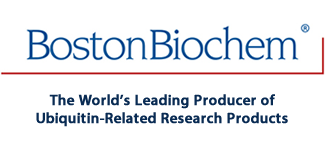
Recombinant Human SUMO2 Mutant K11R Protein, CF Summary
Product Datasheets
Carrier Free
CF stands for Carrier Free (CF). We typically add Bovine Serum Albumin (BSA) as a carrier protein to our recombinant proteins.Adding a carrier protein enhances protein stability, increases shelf-life, and allows the recombinant protein to be stored at a more dilute concentration.The carrier free version does not contain BSA.
In general, we advise purchasing the recombinant protein with BSA for use in cell or tissue culture, or as an ELISA standard.In contrast, the carrier free protein is recommended for applications, in which the presence of BSA could interfere.
ULM-752
| Formulation | Supplied as a solution in HEPES, NaCl, DTT and Glycerol. |
| Shipping | The product is shipped with dry ice or equivalent. Upon receipt, store it immediately at the temperature recommended below. |
| Stability & Storage: | Use a manual defrost freezer and avoid repeated freeze-thaw cycles.
|
Reconstitution Calculator
Background: SUMO2
Human Small Ubiquitin-like Modifier 2 (SUMO2), also known as Sentrin2 and SMT3B is synthesized as a 95 amino acid (aa), propeptide with a predicted 11 kDa. SUMO2 contains a two aa C-terminal prosegment and an 18 aa N-terminal protein interacting region between aa 33-50. Human SUMO2 shares 100% aa sequence identity with mouse SUMO2. SUMO2 also has very high aa sequence identity with SUMO3 and SUMO4, 86% and 85%, respectively. SUMO2 shares only 44% aa sequence identity with SUMO1. SUMOs are a family of small, related proteins that can be enzymatically attached to a target protein by a post-translational modification process termed SUMOylation (1-3). All SUMO proteins share a conserved Ubiquitin domain and a C-terminal diglycine cleavage/attachment site. Following prosegment cleavage, the C-terminal glycine residue of SUMO2 is enzymatically attached to a lysine residue on a target protein. In humans, SUMO2 is conjugated to a variety of molecules in the presence of the SAE1/UBA2 SUMO-activating (E1) enzyme and the UBE2I/Ubc9 SUMO-conjugating (E2) enzyme (4,5). In yeast, the SUMO-activating (E1) enzyme is Aos1/Uba2p (6). Because of the high level of aa sequence identity most studies report effects of SUMO2/3. For example, post-translational addition of SUMO2/3 was shown to modulate the function of ARHGAP21, a RhoGAP protein known to be involved in cell migration (7). Other reports indicate that the SUMOylation with SUMO2/3, but not SUMO1, may represent an important mechanism to protect neurons during episodes of cerebral ischemia (8,9). However, studies suggest that SUMO2/3 expression is regulated in an isoform-specific manner since oxidative stress downregulated the transcription of SUMO3 but not SUMO2 (10).
Mutation of lysine 11 to arginine renders SUMO2 unable to form poly-SUMO multimers and is useful to investigate mono-SUMOylation or can be used to reduce poly-SUMO chain formation. Human SUMO2 contains the VK11TE sequence which allows for the formation of poly-SUMO chains. K11 is the conserved lysine that becomes modified and is the point of attachment for the C-terminal glycine of the preceding SUMO2. The function of SUMO chains has not yet been fully elucidated.
- Desterro, J.M. et al. (1997) FEBS. Lett. 417:297.
- Bettermann, K. et al. (2012) Cancer Lett. 316:113.
- Praefcke, G.J. et al. (2012) Trends Biochem. Sci. 37:23.
- Okuma, T. et al. (1999) Biochem. Biophys. Res. Commun. 254:693.
- Tatham, M.H. et al. (2001) J. Biol. Chem. 276:35368.
- Johnson, E.S. et al. (1997) EMBO J. 16:5509.
- Bigarella, C.L. et al. (2012) FEBS Lett. 586:3522.
- Datwyler, A.L. et al. (2012) J. Cereb. Blood Flow Metab. 31:2152.
- Wang, Z. et al. (2012) Protein Expr. Purif. 82:174.
- Sang, J. et al. (2012) Biochem. J. 435:489.
FAQs
No product specific FAQs exist for this product, however you may
View all Proteins and Enzyme FAQsAffinity Matrices
Recombinant Human HR23A Tandem UBA (TUBE1) Agarose, CF
Recombinant Enzymes
Recombinant Human His6-UBE2N (Ubc13)/Uev1a Complex, CF
Recombinant Human UBE2I/Ubc9 Protein, CF
Recombinant Human SUMO E1 (SAE1/UBA2) Protein, CF
Recombinant Proteins
Recombinant Human SUMO3 AMC Protein, CF
Recombinant Human SUMO1 AMC Protein, CF
Recombinant Human Ubiquitin Protein, CF
Reviews for Recombinant Human SUMO2 Mutant K11R Protein, CF
There are currently no reviews for this product. Be the first toreview Recombinant Human SUMO2 Mutant K11R Protein, CF and earn rewards!
Have you used Recombinant Human SUMO2 Mutant K11R Protein, CF?
Submit a review and receive an Amazon gift card.
$25/€18/£15/$25CAN/¥75 Yuan/¥1250 Yen for a review with an image
$10/€7/£6/$10 CAD/¥70 Yuan/¥1110 Yen for a review without an image
ebiomall.com






>
>
>
>
>
>
>
>
>
>
>
>
摘要同种异体组织和器官移植物供体来源有限,使得异种移植再度成为移植领域的研究热点。异种移植的主要障碍是人体内存在的天然抗体与移植物表面含有α1,3半乳糖残基[Galα(1,3)Gal,αGal]的抗原结合,激活补体系统和炎症反应,导致超急性移植排斥反应(HAR)的发生,使移植物失活。除人类和旧世纪猴,所有哺乳动物的体内都含有αGal抗原,是由一组具有Galα(1,3)Gal双糖末端的糖蛋白或糖脂组成的,它的形成依赖于α1,3半乳糖基转移酶(αGT)的催化。目前,针对αGal抗原克服超急性移植排斥反应的方法:酶处理去除内皮细胞表面的αGal抗原;物理化学方法去除人体血浆中存在的特异性天然抗体;基因工程方法改造表达催化αGal抗原形成的相关酶基因,从而影响该抗原的表达。
关键词异种移植超急性移植排斥反应αGal抗原天然抗体
Thealpha-galepitope(Galalpha1-3Galbeta1-4GlcNAc-R)inxenotransplantationPengShan-Ying,WangWen-Jie (InstituteofMateriaMedica,ChineseAcademyofMedicalSciences&PeikingUnionMedicalCollege,Beijing100050)
AbstractDuetotheeverincreasingshortageofsuitablehumandonors,pigxenografthavebeenconsideredasanalternativesourceoforgansfortransplantation.Themajorformidablebarrierstoxenograftisthephenomenonofhyperacuterejection(HAR)thatmayleadtothedestructionofthetransplantedvascularizedorganinafewminutestohours.HARismediatedbythebindingofna-turalxenoantibodiestoxenogeneicantigenswithsubsequentcomplementsystemactivationandinflammatoryreactionthatleadstothelossofcellfunctionsanddisruptionofvascularintegrity.Ithasbeenconfirmedthata-Galisthemajortargetantigenthatiscomposedofaseriesofglyco-proteinsorglycolipidsthathaveGalα(1,3)Galterminals.Andthecomformationofsuchanti-
geniscatalyzedbya-1,3galactosyltransferase(a1,3-GT).Toovercomehyperacuterejection,severalelegantstrategiesbasedonblockingtheactionofnaturalxenoantibodies:immunoabsorptionofxenogeneicnaturalantibodies,enzymaticremovalofalphaGalantigen,geneticmanipulationtoobtainanimallackofa-GT.
KeywordsXenograft;Hyperacuterejection;Galα(1,3)Galantigen;Xenogeneicnaturalantibody
目前同种异体供器官和组织的匮乏严重阻碍了临床移植手术的实施,使得异种器官移植研究得到广泛而深入的开展。考虑到器官的功能特点、形状和大小,基因调控和控制病毒传播的难易程度,供体是否易于繁殖,以及供体成熟周期的长短等因素,使猪成为理想异种移植供体之一[1]。但是当供体和受体的种属关系较远时,移植物会发生严重的超急性移植排斥反应(HAR)。受者体内存在的天然异源性抗体与移植物内皮细胞表面的特异性αGal抗原结合后,激活补体系统,形成膜攻击复合物(MAC),攻击移植物细胞膜,同时内皮细胞活化,释放炎症因子,继发凝血和炎症反应,最终导致移植物在几分钟或几小时内失活坏死。
一、异种移植排斥中Galα(1,3)Gal抗原的发现
1984年Galili等[2]人留意到人体内存在与αGal抗原反应的特异性天然IgG抗体,并且证实这种抗体的含量占人体内总IgG抗体的1%以上,于是引起许多科学家对这种抗原表位的关注,成为当时异种移植领域的重大发现。实验中发现来自旧世纪猴的COS细胞的表面不表达αGT和αGal抗原,所以不和人体天然抗体反应,然而用鼠的αGT基因转染这种细胞后,就可催化外来的αGal残基转移至细胞表面的底物Galb1,4GlcNAc-R上形成αGal抗原,并与人血浆中的抗体发生快速结合。Parker等[3]利用标记抗体检测移植物内皮细胞上的αGal抗原表达的量与HAR的关系,显示只有αGal抗原表达降低程度超过其基础值的96%时,才有可能使移植物避免因超急性移植排斥反应的发生而坏死。Gal基因敲除的小鼠预先用兔血红细胞膜免疫,使其产生高浓度滴度的抗αGal抗体,然后将表达αGal抗原的小鼠心脏移植入基因敲除小鼠,结果发现67%的移植物在24小时内发生移植物排斥,大部分在16小时内就会出现HAR的组织学特异性。而没有预先免疫的基因敲除小鼠接受异源移植后都没有发生HAR[4]。这些实验结果都表明:异种移植物内皮细胞表面表达的αGal抗原在异种移植排斥中具有重要的地位,它与灵长类动物血浆中存在的抗αGal抗体的结合可能是异种移植手术后发生的超急性移植排斥反应的主要发病机制。
二、αGal抗原的特点
除了旧世纪猴和人类,αGal抗原表达于的所有哺乳动物细胞的的表面。它的本质是一组糖蛋白或糖脂类物质,包括整合素的α1、α2、α3、α5、αv、β1和β3链,冯·威利布兰德因子(vonWillebrandFactor)和纤维结合素(fibronectin)[5]。其分子量为115KDa,125KDa和135Kda,统称gp115/135,另外还在猪血小板上发现一种分子量为225/206Kda糖蛋白,也属于这种抗原。这些抗原末端的半乳糖残基与植物凝集素GariffoniaSimplicifoliaIB4(GSIB4)lectin高度亲和,可用于αGal的检测。
这些与人体天然多克隆抗αGal抗体结合的主要抗原决定簇有三种,它们都含有Galα(1,3)Gal双糖末端:(1)二糖Galα(1,3)Galβ(1,4)Glcβ;(2)三糖Galα(1,3)Galβ(1,4)GlcNAcβ;(3)四糖Galα(1,3)Galβ(1,4)GlcNAcβ(1,3)Galβ(1,4)Glcβ。它们的形成依赖于一种重要的α1,3半乳糖基转移酶[UDP-Gal:-D-Gal-1,3-galactosyltransferase(αGT)]的催化,此酶可以催化UDP-Gal上的半乳糖残基转移至另一含有半乳糖残基末端的底物上,通常为Galβ(1,4)GlcNAc-R,形成Galα(1,3)Galβ(1,4)GlcNAc-R[6]。
αGal抗原类似于人体的B抗原[Galα(1,3)Fuc(1,2)Galactose],两者只有细微的差别。通过对人的ABO血型抗原半乳糖结构分析可以看出:B抗原与αGal抗原的区别仅在于它除了有一个Galα(1,3)Gal末端以外,还有一个岩藻糖(Fuc)支链末端,并且它只存在于B型血和AB型血的个体中。A型血和O型血个体血浆中含有的天然多克隆抗αGal抗体没有抗B抗原的活性,但是85%的抗B抗原的抗体都有抗αGal抗原的特性[7],提示在异源移植手术中应该考虑供体动物血型的影响。
三、αGal抗原在组织中的分布
用GSIB4与细胞上的αGal抗原结合,经放射自显影后可检测到该抗原的分布情况:除了猪的主动脉内皮细胞只有少量表达以外,所有小血管(毛细血管、小动脉、小静脉)的内皮细胞都有大量而稳定的αGal抗原的表达;肝脏的实质中分布均匀,并且表达量很高;肾脏的近曲小管尤其是刷状缘处表达较高,远曲小管只有有中等程度的表达,肾小球和集合管中则无表达;心脏的毛细血管中有高浓度表达,而心肌细胞上无此抗原。肺泡和细支气管表面存在一层连续的αGal抗原分子。胰腺除了脉管和血供系统有αGal抗原的分布,其它组织均无此分布。值得注意的是:成猪胰岛细胞中无αGal抗原的表达,胎猪胰岛细胞中却有表达,并且在体外培养时其表达增加。但是如果将胎猪胰岛移植给裸鼠,数天后这些移植后的胰岛细胞均不再表达αGal抗原,因而能在裸鼠体内存活。
小鼠与猪的αGal抗原的分布完全不同。小鼠内皮细胞虽有αGal抗原的表达,却没有猪的抗原密集。小鼠肾脏和肝脏组织的表达较少。经10%福尔马林固定的组织比新鲜组织中检测到的αGal抗原少,而猪无明显差异。另外不同品系的小鼠αGal的表达也有差别:DBA/2小鼠肝组织表达较弱,BALB/C小鼠则无表达。C57BL/6小鼠肝脏和肾脏虽都有功能性α(1,3)GT基因,但却没有该酶的mRNA表达,它的血管内皮细胞有αGal抗原的表达,血浆中的甲状腺球蛋白、血纤维蛋白、免疫球蛋白等也都含有该片断[8]。
四、αGal抗原引起的超急性移植排斥反应的克服方法
针对αGal抗原引起的超急性移植排斥反应,许多实验室从多角度采用了不同的方法对供器官或细胞进行了处理,都取得了一定的效果。其中以酶处理法、物理化学分离法及基因改造等方法的研究最广泛。
(一)酶处理去除αGal抗原
产气荚膜梭菌的内-β-半乳糖苷酶C(Endo-beta-galactosidaseC)可以破坏Galala(1-3)Galb(1-4)GlcNAc--R结构中的β半乳糖的连接。基于这种酶的序列分析,克隆出可以编码分子量约为93Kda的蛋白的酶基因,然后让其在大肠杆菌中表达。利用这种表达的酶几乎可以完全破坏猪红细胞和主动脉内皮细胞上的αGal抗原。实验采用该酶灌注猪肾后,可以去除其血管内皮细胞上的Galα(1,3)Gal抗原,避免了其与人血浆中的IgM的结合,使移植物存活时间明显延长[9]。为了进一步验证内β半乳糖苷酶在模型中作用并且观察其有无毒副作用,实验中用两种方法进行检测:一种是将供体猪肾直接取出后用含有内β半乳糖苷酶的溶液采用体外灌注的方法可以有效地控制猪肾内皮细胞上αGal抗原的数量,但移植一天后即可观察到该抗原的再次出现,免疫组化未检测到灌注肾的损伤;另一种方法是将内β半乳糖苷酶静脉注射,4-8小时后猪肾血管内皮细胞上的αGal抗原可完全清除,12小时后不仅没有发现组织损伤,同时98%的红细胞上的αGal抗原也可被分解,但是24小时后又会出现。如间隔一段时间后(约2个月)再次注射,清除效果依然显著,而且没有蓄积毒性[10]。Luo[11]等发现的绿咖啡豆α-半乳糖苷酶能去除猪内皮细胞上主要αGal抗原的α-半乳糖基,是迄今为止作用最强的半乳糖苷酶。利用PK15细胞(一种猪肾细胞)检测可见用该酶处理后的细胞在人血浆中的存活时间延长。体外实验表明使用绿咖啡豆α-半乳糖苷酶灌注的猪血管30分钟内就可去除αGal抗原,而对照组的抗原存在时间长达3小时以上。体内实验检测时发现治疗组的血管存活时间与对照组相比明显延长,随后进行活组织检查时,用GSBI4染色可见治疗组血管基底膜很少有IgM和C3的沉积。就目前研究现状而言,酶处理去除Gal抗原是暂时性的,不能阻止该抗原的再次出现。但是如果联同其他手段,如使用免疫抑制剂及相应的抗炎药物,可以使移植物躲过急性移植排斥的快速致死阶段,而进入适应期,对于提高异体移植物的存活率亦有一定的参考意义
(二)物理化学方法阻止抗原抗体反应的发生
在体内用改进的蛋白A免疫吸附(PAIA)方法可以使血浆中总免疫球蛋白和异源性IgG、IgM的水平下降50%以上。Watts[12]等利用血浆分离置换仪与Gal亲和层析柱用体外免疫吸附(EIA)的方法去除抗αGal的抗体,经酶联免疫吸附测定发现血浆中IgM、IgG的含量平均下降97.3%和99.4%,18小时到24小时后抗体量会逐渐恢复,但仍可保持在下降水平的80.1%(IgM)和84.7%(IgG),随后的恢复速度依赖于免疫抑制剂的使用。
用合成的可溶性αGal低聚糖拮抗抗αGal抗原的抗体的作用也是一种有效的方法。如LJP920,是一种合成的Galα(1,3)Gal的八聚体,静脉注射不仅可以去除血浆中抗αGal抗原的抗体,而且可以抑制B细胞对该抗体的生成[13]。Romano[14]等用合成的含有共同Galα(1,3)Gal末端结构和不同的侧链的的低聚糖溶于生理盐水后,静注给于含有高滴度抗猪IgG,IgM抗体和对猪红细胞有高溶血作用的B型血狒狒,发现血浆中该药的浓度为300-400微克/毫升时就可减少70%左右的抗原抗体反应和细胞毒性。将猪的心脏移植给狒狒时,在血液灌注前用低聚糖混合物静脉灌注,可使心脏功能完好地持续了8小时,但至18小时后逐渐出现功能活性下降直至丧失。心肌组织学检验也表明3-5小时只出现充血和轻微的血管排斥,18小时后有严重的血管排斥发生。所以αGal低聚糖的治疗方法只能延迟,而不能完全阻止排斥反应的发生。
(三)针对α1,3-GT的基因改造方法
基因调控的方法是目前被认为能够最终克服HAR并实现猪到人体的异种移植的有效手段,为此人们研究了与多种与αGal的表达相关的酶的作用特点,以期找到合适的克隆靶点。其中1,4-N-乙酰葡糖胺基转移酶[1,4-N-acetylglucosaminyltransferase(GnTⅢ)]的作用是催化GlcNAc结合甘露糖上,去除了聚糖N末端核心的GlcNAc结构。同时它还竞争性地阻止了乙酰葡糖胺基转移酶Ⅳ和乙酰葡糖胺基转移酶Ⅴ催化的带有GlcNAc支链结构聚糖底物的形成,使αGal抗原的表达因底物的减少而下降。Miyagawa等[15]将GnT-Ⅲ基因转入猪的内皮细胞可以有效地减少Galα(1,3)Gal抗原的表达。
近几年,用克隆表达的方法确定了人体内至少存在两种不同的α1,2-墨角藻糖基转移酶(α1,2-fucosyltransferase,FUT),又称H转移酶(HT)。猪体内也存在这种酶,在氨基酸序列上与人有很高的同源性,并且功能相似。FUT和α-GT都以N-乙酰乳糖胺基为共同的底物,并分别将墨角藻糖基和半乳糖基转移至该底物,从而产生墨角藻糖基化的N-乙酰半乳糖胺和αGal抗原。而墨角藻糖基化的N一乙酰半乳糖胺则不能再受α-GT催化接受半乳糖残基。用猪的α-GT和人FUT的CDNA共转染COS细胞,发现FUT能抑制αGT的表达,显著地减少αGal抗原的表达量[16]。由于抗原抗体反应发生后紧接着会出现补体的活化,利用基因工程方法得到同时表达人FUT和人补体抑制因子(如hCD59)的转基因猪,通过研究其外周血单核细胞和主动脉内皮细胞的功能,发现这些细胞对人血清介导的坏死有很强的抑制作用,而且比单独表达H转移酶或hCD59的细胞作用强的多[17]。
如前所述,体内外实验都证实内β半乳糖苷酶可有效地分解αGal抗原,但由于该抗原在体内可以持续合成,仅仅体外灌注或注射等方法无法简便而有效地控制该抗原地表达,所以利用转基因的方法使猪内皮细胞也能稳定表达内β半乳糖苷酶,结果表明可在新的抗原合成的情况下仍使细胞表面的αGal抗原减少30倍以上,并可显著减少补体介导的细胞毒作用。然而内β半乳糖苷酶的作用又使底物N-乙酰半乳糖胺的量增加,对新抗原的生成没有任何抑制作用,所以单独使用不可能克服HAR。HT则恰好作用于底物N-乙酰乳糖胺基,所以使β半乳糖苷酶和HT共表达于αGal抗原阳性的COS细胞上,发现αGal抗原基本丧失殆尽,该COS细胞与人血清不发生反应[18]。这些研究表明:基因工程可以得到同时表达多种与抑制排斥有关分子的转基因动物器官,基本能很好地抑制αGal抗原的表达,减少抗原抗体反应的发生的几率,为增加异源移植存活率提供了有效的手段,使得异源移植在临床应用成为可能.
五、结语
综上所述,异种移植的主要障碍是人体内存在的天然抗体与血管内皮细胞上的异种αGal抗原结合后发生的超急性排斥反应,目前研究的热点主要集中在如何清除供器官上的特异性抗原,所以进一步研究这种抗原系统结构上的特点、它在细胞和亚细胞结构上的分布,鉴定出与αGT相关的糖基转移酶将有助于解释αGal抗原结构的特异性,对于培育用于防止异源移植排斥反应的转基因猪也有重要意义。
参考文献
[1]StoyeJ.Noclearanswersonsafetyofpigsastissuedonorsource.Lancet,1998,352:666-667
[2]GaliliU,RachmilewitzEA,etal.AuniquenaturalhumanIgGantibodywithanti-alpha-galactosylspecificity.JExpMed,1984,160:1519-1531
[3]ParkerW,LinSS,PlattJL.Antigenexpressioninxenotransplantation:howlowmustitgo?Transplantation,2001,71:313-319
[4]GockH,SalvarisE,Murray-SegalL,etal.HyperacuterejectionofvascularizedhearttransplantsinBALB/cGalknockoutmice.Xenotransplantation,2000,7:237-246
[5]HolzknechtZE,CoombesS,BlocherBA,etal.Identificationofantigensonporcinepulmonarymicrovascularendothelialcellsrecognizedbyhumanxenoreactivenaturalantibodies.LabInvest,1999,79:763-773
[6]JanzukJ,Liw,ZhangX,etal.α-Galoligosaccharides:chemistryandpotentialbiomedicalapplication.CurrMedChem,1999,6,155-164
[7]McMorrowIM,ComrackCA,NazareyPP,etal.RelationshipbetweenABObloodgroupandlevelsofGalalpha1,3Galactose-reactivehumanimmunoglobulinG.Transplantation,1997,64:546-549
[8]SanrinMS,McKenzieIF.Galalpha(1,3)Gal,themajorxenoantigen(s)recognisedinpigsbyhumannaturalantibodies.ImmunolRev.1994,141:169-190
[9]OgawaH,MuramatsuH,KobayashiT,etal.Molecularcloningofendo-beta-galactosidaseCanditsapplicationinremovingalpha-galactosylxenoantigenfrombloodvesselsinthepigkidney.JBiolChem,2000,275:19368-19374
[10]LuoY,WenJ,LuoC,etal.Pigxenogeneicantigenmodificationwithgreencoffeebeanalpha-galactosidase.Xenotransplantation,1999,6:238-248
[11]LiuD,KobayashiT,YokoyamaI,etal.EnzymaticremovalofalphaGalantigeninpigkidneysbyexvivoandinvivoadmiNISTrationofendo-beta-galactosidaseC.Xenotransplantation,2002,9:228-236
[12]WattsA,FoleyA,AwwadM,etal.PlasmaperfusionbyapheresisthroughaGalimmunoaffinitycolumnsuccessfullydepletesanti-Galantibody:experiencewith320apheresesinbaboons.Xenotransplantation,2000,7:181-185
[13]JiaL,LinnikMD,JackRM,YuL.BiostABIlityandpharmacokineticsofLJP920,anoctamericGal(alpha1-3)Galconjugatefortheinhibitionofxenotransplantationrejection.JPharmPharmacol,2001,53:999-1005
[14]RomanoE,NeethlingFA,NilssonK,etal.IntravenoussyntheticalphaGalsaccharidesdelayhyperacuterejectionfollowingpig-to-baboonhearttransplantation.Xenotransplantation,1999,6:36-42
[15]Miyagawa.S,Murakami.H,Takahagi.Y,etal.RemodelingoftheMajorPigXenoantigenbyN-AcetylglucosaminyltransferaseIIIinTransgenicPig.JBiolChem,2001,276:39310-39319
[16]CohneyS,MouhtourisE,McKenzieIF,etal.Molecularcloningandcharacterizationofthepigsecretortypealpha1,2fucosyltransferase(FUT2).IntJMolMed,1999,3:199-207
[17]CostaC,ZhaoL,BurtonWV,etal.TransgenicpigsdesignedtoexpresshumanCD59andH-transferasetoavoidhumoralxenograftrejection.Xenotransplantation,2002,9:45-57
[18]NarinOsman,IanF.C.McKenzie,KarenOstenried,etal.Combinedtransgenicexpressionofα-galactosidaseandα1,2-fucosyltransferaseleadstooptimalreductioninthemajorxenoepitopeGalα(1,3)Gal.Proc.Natl.Acad.Sci.USA,1997,94:1467714682
体液免疫:生发中心母细胞的轻链和重链V基因可发生高频率的点突变,在抗原诱导的情况下产生.在初次免疫应答时,大量抗原的出现,可使表达不同亲和力的BCR的各种B细胞克隆被选择和激活,产生多种不同亲和力的抗体.每个B细胞开始时一般均表达IgM,在免疫应答时首先分泌IgM,通过重链C区的基因重排,随后会产生IgG,IgA,起主要的免疫应答作用.
细胞免疫:抗原被提呈给T细胞后,T细胞活化,产生大量的细胞因子,比如干扰素,白细胞介素等,参与细胞免疫过程.
你可以根据抗原的特征去判断,
1、异物性 但也有例外:如癌细胞、损伤或衰老的细胞
2.大分子性 抗原多数是蛋白质,其结构较复杂,分子量较大
3.特异性 抗原决定簇(病毒的衣壳)
进入人体的弹片具有特异性,但不具有大分子性,因而不能称之为抗原;有些过敏源可以称之为抗原.
希望能帮到你,望采纳
第三道防线是人体在出生以后逐渐建立起来的后天防御功能,特点是出生后才产生的,只针对某一特定的病原体或异物起作用,因而叫做特异性免疫(又称后天性免疫)。后天性免疫--免疫的第三道防线免疫的第三道防线:特异性免疫。主要由免疫细胞--淋巴B、淋巴T细胞进行免疫。其中,淋巴B细胞“负责”体液免疫;淋巴T细胞“负责”细胞免疫。后天性的特异性免疫系统,是一个专一性的免疫机制,针对一种抗原所生成的免疫淋巴细胞分泌的抗体,只能对同一种抗原发挥免疫功能。而对变异或其他抗原毫无作用。第1、2防线,就好比杀毒软件本体;第3到防线就好比病毒/木马专杀软件。只有3道防线同时、完整、完好发挥免疫作用,我们的身体健康才能更充分的得到保证。展开
由此,注射疫苗(没有破坏力但却能刺激机体产生对应的抗体)属于主动免疫,注射血清(即抗体)属于被动免疫,前者旨在预防,标本兼治,后者则能够应急。









